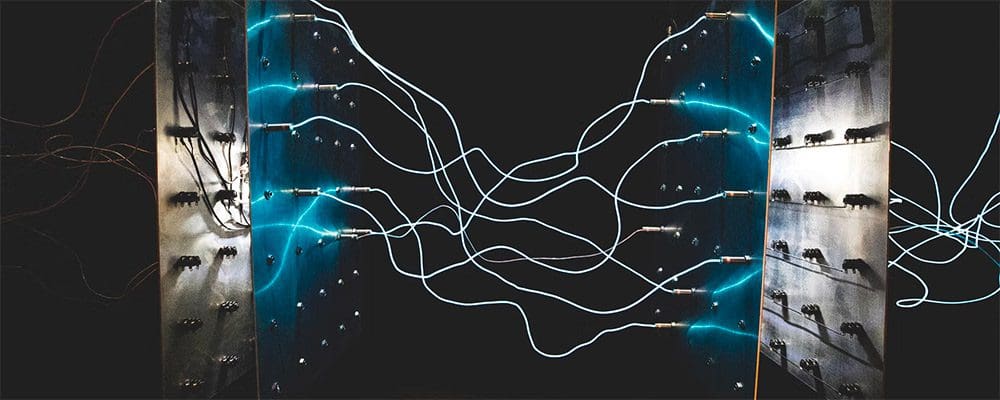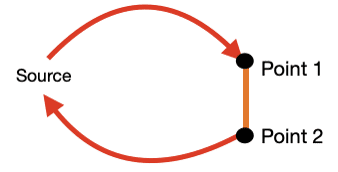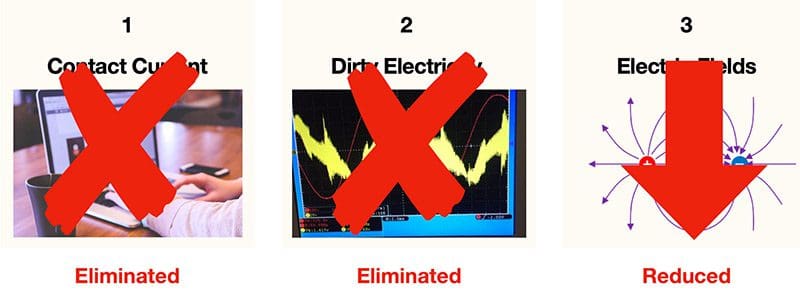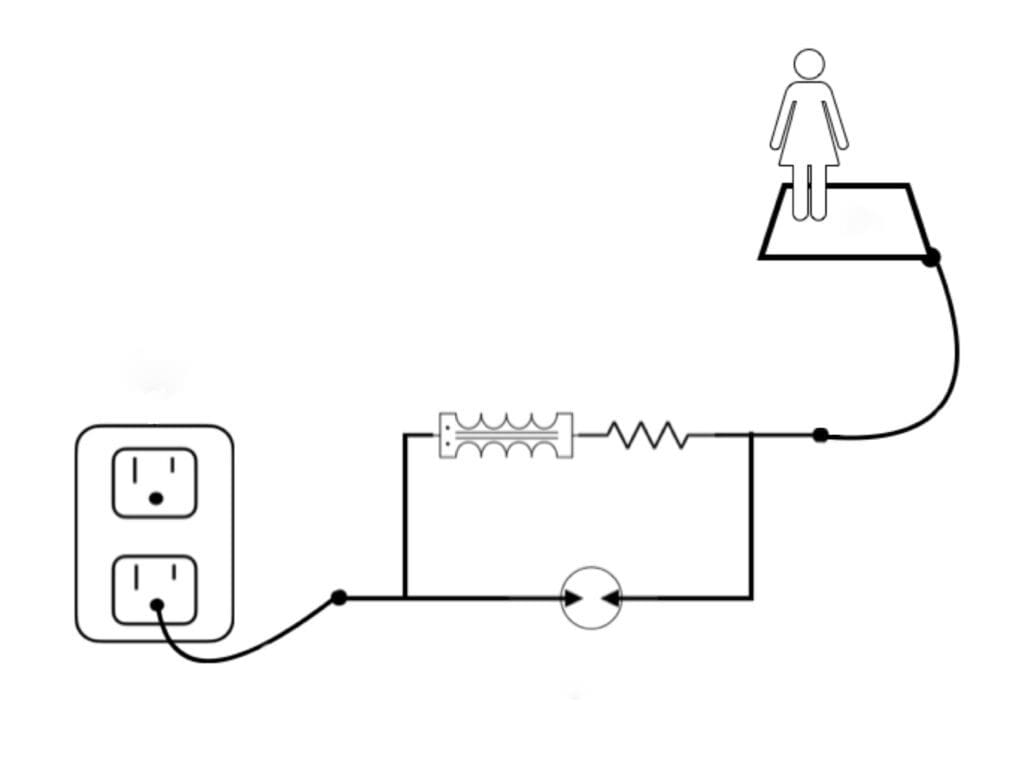Contact currentDefinition and Basic Concept Contact current refers to the electrical current that flows through a person’s body when they come into physical contact with an object that is electrically charged...., or touch current, is the concept of electrical current"Electrical current" refers to the flow of electric charges (like electrons) through a conductor, such as a wire. It's similar to how water flows through a pipe. In electrical systems,... flowing through a human or animal body upon direct contact with an electrified surface or equipment.
Experts say that prolonged exposure to contact current can have devastating effects on your health, including developing chronic diseases like leukemia.
This post will go in-depth into the subject of contact current, its health effects, and what you can do to protect yourself and your loved ones from its impact. So, let’s begin.
How Does Current Work?
Before going deeper into the concept of contact current, let’s take a moment to understand how current works.
Current is the rate at which electrons flow past a point in a complete electrical circuit.

Want to Slash Your EMF Health Risks?
Want to Slash Your EMF Health Risks?
Good! Learn the one small change you should make right now.
To understand this better, think of electric current as athletes on a race track. But, instead of a quick sprint, they have to go around the track, ending up exactly where they began to finish the race.
The athletes in this analogy are the electrons moving from point A to B, powering up electronic gadgets and electrical appliances.
And just like the hypothetical race, current has to complete a full circle. This means they have to go back, the same way they came in, completing a circuit.
One real-life example of this would be, turning on the light switch. When you flip the switch, here are some things that happen:
- The current comes from the breaker panel, through a wire
- It releases some energy"Energy" is a fundamental concept in physics, often described as the ability to do work or cause change. In everyday terms, it's what is needed to move things, heat them... into the light bulb
- The excess energy returns to the breaker panel through a neutral wire, completing a circuit.
This process continues until you turn off the light bulb.
What is Contact Current?
Contact current is a phenomenon that occurs when you touch something that has current flowing on it. As soon as you touch the object, the current goes through your body.
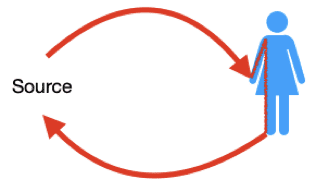
Contact current is an imperceptible experience most of the time, which means you can’t feel it. However, if it’s strong enough, you may feel a little tingling sensation. And if it’s very strong, it could cause some severe injuries or even death.
As I mentioned already, the nature of current is that it has to travel in a full circle—coming from one end, and going back through another, but ending up exactly where it started its journey. Now, when you touch an electrified object, there’s no neutral wire to transfer that current back to the breaker. This means your body will be the travel path for the current to move around.
For example, if you touch an electrified object, the current from it can travel from one hand to the other or from your hand to your feet.
Current flow requires 2 or more contact points that are at different voltages.
So, what does voltage mean?
What is Voltage?
Voltage refers to the difference in pressure. A difference in pressure between two points means there is a voltage difference. Energy wants to be balanced, so it will flow from the higher pressure to the lower pressure.
To understand voltage better, you can think of water flowing at a waterfall.
Voltage is like the difference in height between the groundIn the context of electricity, "ground" or "earthing" refers to a reference point in an electrical circuit from which voltages are measured, a common return path for electric current, or... and starting point of the waterfall. Just as the height of the waterfall determines how long the water has to travel to reach the ground, in the same way, voltage decides how much current has to travel to reach a low energy point from a high energy point.
Current, on the other hand, you can think of it as the volume of water flowing down at any given moment. Just like you’d say x gallons for water, you can say x amps for current.
Pressure is a crucial factor in the current’s ability to flow. Just like the water wouldn’t flow if there’s no height difference between points A to B, there will be no current flow if there’s no pressure present.Voltage is merely a path for the current to balance itself. It’s current that causes harmful effects, not the voltage.
Body Voltage Meters Don’t Say Much
It’s worth noting that many people use a body voltage meter to test their exposure to electric fieldsDefinition and Nature of Electric Fields Electric fields are a fundamental aspect of electromagnetic fields, created by electric charges, either stationary or moving. These fields represent the force that electric.... But it has a serious unavoidable problem: body voltage meters only measure the difference in pressure between two points, not how much current is traveling between those points.
Voltage doesn’t account for a variable called impedance.
Impedance is a way to measure the opposition of electrical flow. So, basically, how much your skin can resist the current.
When you touch an electrified surface, your skin creates impedance.
While measuring body voltage, you are not accounting for your skin’s role in the flow of electricity– body voltage doesn’t tell us how many electrons will actually penetrate the body.
In other words, say your skin is dry; it shows an excellent level of impedance to current flow. But when wet or exposed to high frequencies, there’s little to no impedance.
This is why body voltage is not an accurate or appropriate indicator for the potential of harm from the electrical flow.
Instead, you need to measure the current.
Research shows that it’s the current that causes the most harm. Our body has its own electrical current flow. And when we expose ourselves to human-made electric current, it can cause us to develop numerous health problems.
Contact Current is an Everyday Factor in our Lives
Whenever we touch something connected to the grounding system, we encounter contact current. Even though contact current is not common knowledge, it’s something that has the potential to cause severe harm, and we’re exposed to it daily. In fact, the utilities and appliances in homes, especially in older homes, are the most common source of this exposure.
Your metal appliances (refrigerator, toaster, sink) are connected to the grounding system with a 3-prong plug or a bonding wire. This means that if there is current on your grounding system (which there usually is), and your metal toaster is plugged into the grounding system, then you can come into contact with this current.
Note that you also come into contact with this current when you use any type of grounding device. This includes grounding mats, earthing sheets, and mattresses. It also includes grounded EMF protection like canopies and paint.

Dirty Electricity
Besides the direct exposure, ‘dirty electricity also exposes us to contact current. How?
Dirty electricityDirty Electricity, also known as electrical pollution, refers to the presence of irregularities or distortions in the normal electrical current within a wiring system. These distortions, which deviate from the... (DE) is the casual phrase for harmonics"Harmonics" in the context of waves and Electromagnetic Fields (EMF) is a complex yet fundamental concept in physics and electrical engineering. The term originates from the field of music, where..., voltage transients, switching noise, high-frequency noise, or spurious distortions in the 60 Hz waveform.
Electric current runs in frequencies between 50-60 Hz in most countries. If you take a True-RMS (TRMS) device and measure the alternating currentFundamentals of Alternating Current Alternating current (AC) is a type of electrical current in which the flow of electric charge periodically reverses direction. In contrast to direct current (DC) where... passing through your home, you’ll see a clean sine waveThe term "wave" in the context of Electromagnetic Fields (EMF), frequency, and energy is a fundamental concept in physics and essential in understanding various natural phenomena and technological applications. A..., like the one in the image below.
This clean sine wave indicates that there’s no disturbance in your electricity flow.
But, if something disturbs it, the sine wave will be distorted, which means you have dirty electricity present in your home. Here are some of the primary sources of dirty electricity.
- power"Power" in a scientific context refers to the rate at which work is done or energy is transferred. In simpler terms, it's how fast something is using energy. For example,... inverters
- light switch dimmers
- energy-efficient lights
- any appliance with a motor (such as a blender)
- wireless devices (like WiFi routers and smart meters)
- overlapping or intertwined extension cords
- poor electrical wiring in the walls
Dirty electricity exposes your body to this disturbed current. This is why filtering these frequencies out is an important part of minimizing the amount of current and frequencies that the body is exposed to and the subsequent damage to our health.
But the good news is, as soon as you stop the current, you can significantly reduce or remove all of the dirty electricity.
But, Why is Contact Current So Harmful?
There has been a lot of research conducted on electricity, voltage, current, and how it affects the human body. And, many have found the correlation between electricity exposure and negative effects on human health. But the problem is the results are generally confusing, especially to the general audience.
Fortunately, researchers at the ‘Electrical Power Resource Institute’ (EPRI) have helped clarify what the research tells us. EPRI is “an independent research and development organization to support the electricity sector [to guide utilities] and address its technical and operational challenges.”
In 2000, EPRI published a report called “The Possible Role of Contact Current …” which concluded that 1 μA of contact current is sufficient to cause physical health effects in humans.
To understand this, you have to first get familiar with the current flow measurements.
Current flow is measured in amp or ampere.
- 1 A (one amp) equals 1000 mA (milli-amps.)
- 1 mA (milliamps) is equal to 1000 μA (micro-amps)
Therefore, 1 μA (one micro-ampere) is equal to one million amps or 0.000001 A.
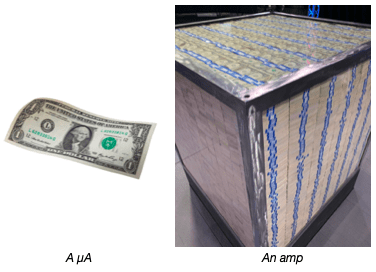
Why Does This Matter?
1 μA (one micro-ampere) is an incredibly small amount of current. It’s so small that it’s very difficult to measure.
This means that when we can measure current easily, we have levels high enough to cause serious health issues, like those associated with childhood leukemia.
To put this into perspective, a typical incandescent light bulb will draw about 500 mA of current. This is magnitudes more powerful than 1 uA.
Thanks to other researchers like Dave Stetzer, Magda Havas, and Sam Milham, awareness of this issue continues to grow.
It’s also interesting to note that the problem with contact current is very well known and accepted among dairy farmers.
The more contact current a dairy cow is exposed to, the less amount of milk yield they receive. It only takes 1 mA of current or 0.5 V to disrupt milk production. When this happens, utility companies may take increased measures to remedy the problem. They do not, however, recognize that the same problem affects humans.
What Can You Do to Protect Against Contact Current?
Well, you can always work with a skilled expert– such as a Certified Building Biologist, who is familiar with electrical systems–to significantly reduce the amount of contact current flowing in your home.
Unfortunately, experts with this kind of knowledge are extremely difficult to find.
This is why, in collaboration with such an expert, Andrew McAfee, we created the NCB.
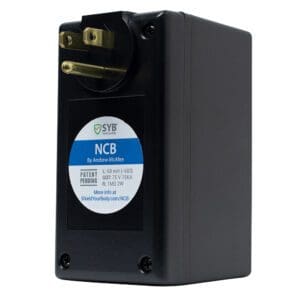
The NCB is short for Nuisance Current Blocker, and it makes it safer to ground your body while using grounding products like earthing sheets, grounding mats, and other grounded EMF products.
It blocks contact current, stops dirty electricity, and reduces electric fields from your grounding product as well as your body.
Grounding products have electrical hazards, and to stop that, the NCB stops current on the grounding conductors.
Check out this diagram for more clarification. In this diagram, we have a grounded bed sheet and a grounding mat.
You can simply place the NCB between your grounding products and the wall outlet. The resistor in the NCB stops the current from getting to your grounding mat.
And – VITALLY– the NCB maintains an effective “ground-fault path.” You may not know what that means, but it’s really important. Because, if for some horrible reason an electrical cord is cut, or something else goes wrong, your grounding mat can get electrified, causing you to experience an electric shock.
In that case, the NCB activates automatically and sends that current back, tripping the breaker immediately, protecting you from a potentially life-threatening shock.
You can get your own NCB delivered to your doorstep from the SYB store.
Final Thoughts
Even though we don’t think much of contact current, it’s everywhere, and we’re exposed to it every single day. And these minor exposures accumulated over time can cause you and your loved ones to develop major health problems. So, now is the right time to start acting on it.
The US Patent Pending NCB from SYB is an easy solution to this. So, think about it.
